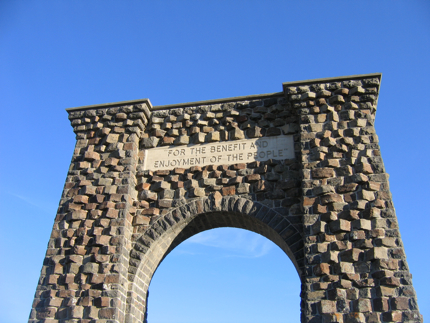 Roosevelt Arch in Yellowstone National Park (photo by Beth Pratt)
Roosevelt Arch in Yellowstone National Park (photo by Beth Pratt)
“The headwaters of the Yellowstone River…is hereby reserved and withdrawn from settlement, occupancy, or sale…and dedicated and set apart as a public park or pleasuring-ground for the benefit and enjoyment of the people.”
With this pronouncement by the United States Congress on March 1, 1872, President Ulysses S. Grant signed into law the Yellowstone Park Protection Act. Yellowstone became the world’s first national park and “America’s Best Idea” was born.
National Parks have been an integral part of my life—from my father taking me to see whales on Cape Cod National Seashore, to spending college summers hiking in Rocky Mountain National Park, to providing inspiration for my writing, space for my joyful wanderings, and an impetus for my career as an environmental leader. The tranquility I experience while hiking in places like Tuolumne Meadows or Hayden Valley feeds my soul with sustenance as essential to my existence as food or water.
So take time today to celebrate the birthday of Yellowstone—and of all our national parks. And if you are looking for a good birthday present for Yellowstone, consider donating to the National Parks and Conservation Association—a great non-profit that helps safeguard our parks for future generations.


